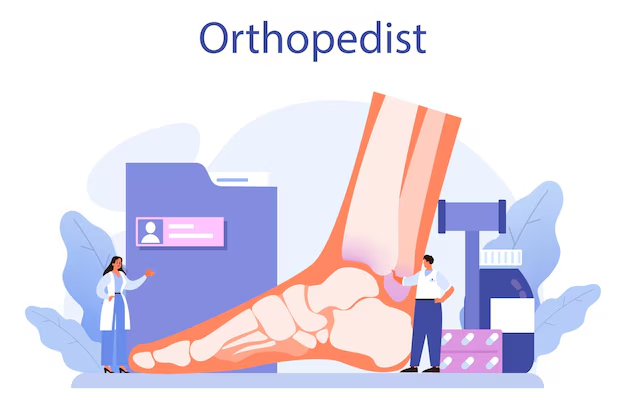

Orthopedics focuses on treating the musculoskeletal system. This system comprises muscles, bones, joints, ligaments, and tendons. A person who specializes in orthopedics is known as an orthopedist.
Orthopedists use surgical and nonsurgical approaches to treat musculoskeletal issues, such as sports injuries, joint pain, and back problems.
This article provides an overview of orthopedics. It outlines the different conditions that orthopedists treat and explains what a person can expect during an orthopedic appointment.
The article also covers the qualifications necessary to become an orthopedist.
Orthopedics, also known as orthopedic surgery, is a branch of medicine that focuses on the care of the skeletal system and its interconnecting parts. These parts include the following:
There are generally two types of orthopedists: surgical and nonsurgical. The former are called orthopedic surgeons, while nonsurgical orthopedists include physiatrists and physical medicine and rehabilitation specialists.
An orthopedist often works as part of a larger orthopedic treatment team. This team may include:
Orthopedists treat a wide variety of musculoskeletal conditions. These conditions may be present from birth, or they may result from an injury or age-related wear and tear.
Below are some of the most common conditions that an orthopedist may treat:
A person may wish to ask the following questions:
A vital decision that a person has to make before an orthopedic surgery is choosing a licensed and accredited surgeon from a competent professional association.
It is important to check that a surgeon:
A person can use the IBOS and Indian Academy of Orthopedic Surgeons (IAOS) websites to find an orthopedic surgeon.
During the first appointment, the orthopedist will work to diagnose the persons condition. This can include conducting a physical examination and taking X-rays.
In some instances, the doctor may carry out in-office tests or order additional tests to confirm the diagnosis.
The process of diagnosis will also involve the orthopedist:
The orthopedist may also order additional diagnostic tests. These may include:
An orthopedist may perform an in-office procedure to help diagnose and treat certain musculoskeletal conditions.
The Indian Academy of Orthopaedic Surgeons states that X-rays are “the most common and widely available diagnostic imaging technique.”
An orthopedist will often perform X-rays in-office, allowing them to diagnose certain conditions during a persons appointment. They may also deliver injections, such as corticosteroid injections to relieve inflammation, and perform ultrasound scans.
Some acute injuries, such as fractures and dislocations, require the orthopedist to manipulate the bone or joint and immobilize it using a splint, cast, or brace.
In addition to in-office treatments, a persons orthopedist may recommend one or more of the following to treat chronic musculoskeletal conditions:
An orthopedist may specialize in a particular branch of orthopedic medicine. These branches are called subspecialties.
Some orthopedic subspecialties include:
The sections below examine some surgical procedures that an orthopedist may perform as part of their work.
TJR surgery is one of the most common elective surgeries in the United States.
During a TJR, or arthroplasty, the doctor will remove the worn-out surfaces of a damaged joint and use a prosthesis as a replacement to replicate the functions of a typical healthy joint.
Many people can perform daily activities more quickly after a total joint replacement.
Arthroscopic surgery is a minimally invasive procedure that uses an arthroscope to diagnose joint problems.
An arthroscope is a long, thin camera — about the size of a buttonhole — that an orthopedic surgeon will insert into a persons joint, most commonly the knee or shoulder. The camera connects to a video monitor that allows them to see the inside of the joint.
The surgeon can then use several small, thin instruments to fix various problems by making minor additional incisions.
Arthroscopic surgery of the knee is the most common type of orthopedic surgery that takes place in the U.S. An orthopedist may perform arthroscopic surgery to repair common joint injuries, such as meniscus tears, ACL tears, and rotator cuff tears.
It can take 1 week to several months for a person to recover fully from an arthroscopy.
An orthopedic surgeon may recommend fracture repair surgery to restore the normal anatomy of a more severely broken bone. To stabilize the bone, they can use different types of implants. These include rods, plates, screws, and wires.
Following a fracture repair surgery, it is common for a person to lose muscle strength and range of motion in the injured area. However, the doctor will recommend specific exercises to restore normal muscle strength, joint motion, and flexibility.
Orthopedic surgeons may performTrusted Source bone grafting to augment bone regeneration when a persons body cannot produce enough new bone.
In bone grafting surgery, an orthopedic surgeon uses bone from a persons body or a donor to repair and strengthen diseased or damaged bones. They may also use a synthetic bone substitute and biological factors when natural bone grafts are unavailable.
During a spinal fusion surgery, the doctor will fuse two or more vertebrae to correct problems with the spine. This procedure allows the vertebrae to heal into a single, solid mass of bone.
An orthopedic spine surgeon may perform a spinal fusion for some back and neck problems, including scoliosis and injuries to the vertebrae or intervertebral disks.
To become an orthopedic surgeon, a person must:
After completing the 5-year residency program, many orthopedic surgeons choose to complete an additional 1-2 years of fellowship training in one of the subspecialty areas.
Orthopedics is a medical specialty that focuses on treating injuries and diseases of the musculoskeletal system. Some conditions are present at birth, whereas others may occur due to injury or age-related wear and tear.
Orthopedists often work as part of a broader orthopedic team that may include physician assistants, nurse practitioners, athletic trainers, and occupational or physical therapists. Together, they help diagnose, treat, and rehabilitate people with musculoskeletal conditions or injuries.
All orthopedists must undergo extensive training to obtain their medical license. They must continue ongoing education and training to maintain it.